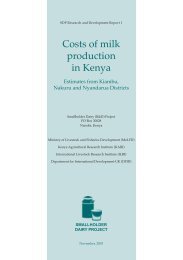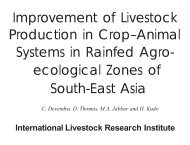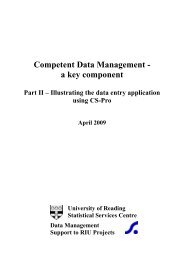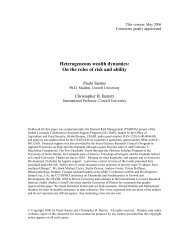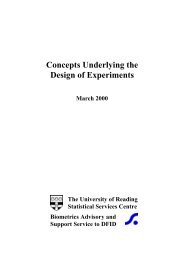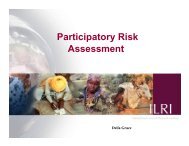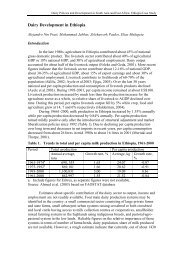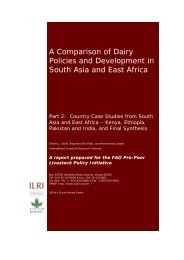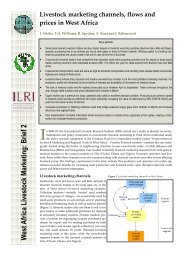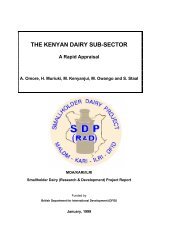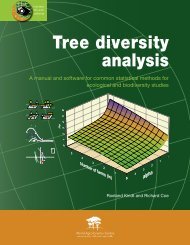Designing ecological and biodiversity sampling strategies
Designing ecological and biodiversity sampling strategies
Designing ecological and biodiversity sampling strategies
Create successful ePaper yourself
Turn your PDF publications into a flip-book with our unique Google optimized e-Paper software.
grid. Likewise, it will not be possible to detect patterns larger than the overall size ofthe grid. In fact, the maximum size must be less that the size of the grid, as thepatterns can only be recognised if there are several repeats within the grid. It is thisaspect of pattern scale, set by the objectives of the study, which should determine thespacing <strong>and</strong> overall size of a grid.It is sometimes suggested that grid spacing should be such that neighbouring pointsare uncorrelated. This notion of spatial correlation is important but also confusing.The correlation between measurements at a given distance apart is not an absolutequantity, but is measured relative to an average (technically, the issue is one ofstationarity). To see this, think of analysing data from a single window in Kenya.Points more than 200m apart may well show no similarity in BGBD. But if we putdata from a global dataset together, we would expect to find similarity not justbetween points in the same window but perhaps between all points in Kenya.7. Dealing with variabilityExperience from studies suggests that one should expect a high level of variation inmany key measurements in <strong>biodiversity</strong> or other <strong>ecological</strong> studies. Even over shortdistances we expect large variation in numbers <strong>and</strong> diversity of different functionalgroups. In tropical agricultural l<strong>and</strong>scapes, the variation within a l<strong>and</strong>-use categorymay be considerable in terms of management practices, variation in above-groundvegetation characteristics, differences in l<strong>and</strong> use history of the plot, edge effects,topographic position <strong>and</strong> bio-physical characteristics. If formal methods ofdetermining sample size requirements were followed through, they are likely to giveindications of sample size many times larger than that which is feasible <strong>and</strong>affordable. What should be done?First, there is no point in doing nothing. Simply carrying on with the preconceivedsample size will mean objectives will not be met. If the original plan was to haveabout 10 samples of each l<strong>and</strong> use within a benchmark site, <strong>and</strong> the indications arethat we need about 100 samples of each, there is no point continuing. The result willbe vague <strong>and</strong> inconclusive results, reflected in high st<strong>and</strong>ard errors <strong>and</strong> no significanteffects when analysing the data. There are three possible responses:1. Increase the sample size.2. Use <strong>sampling</strong> methods to reduce the variability3. Reduce the scope of the study.17



